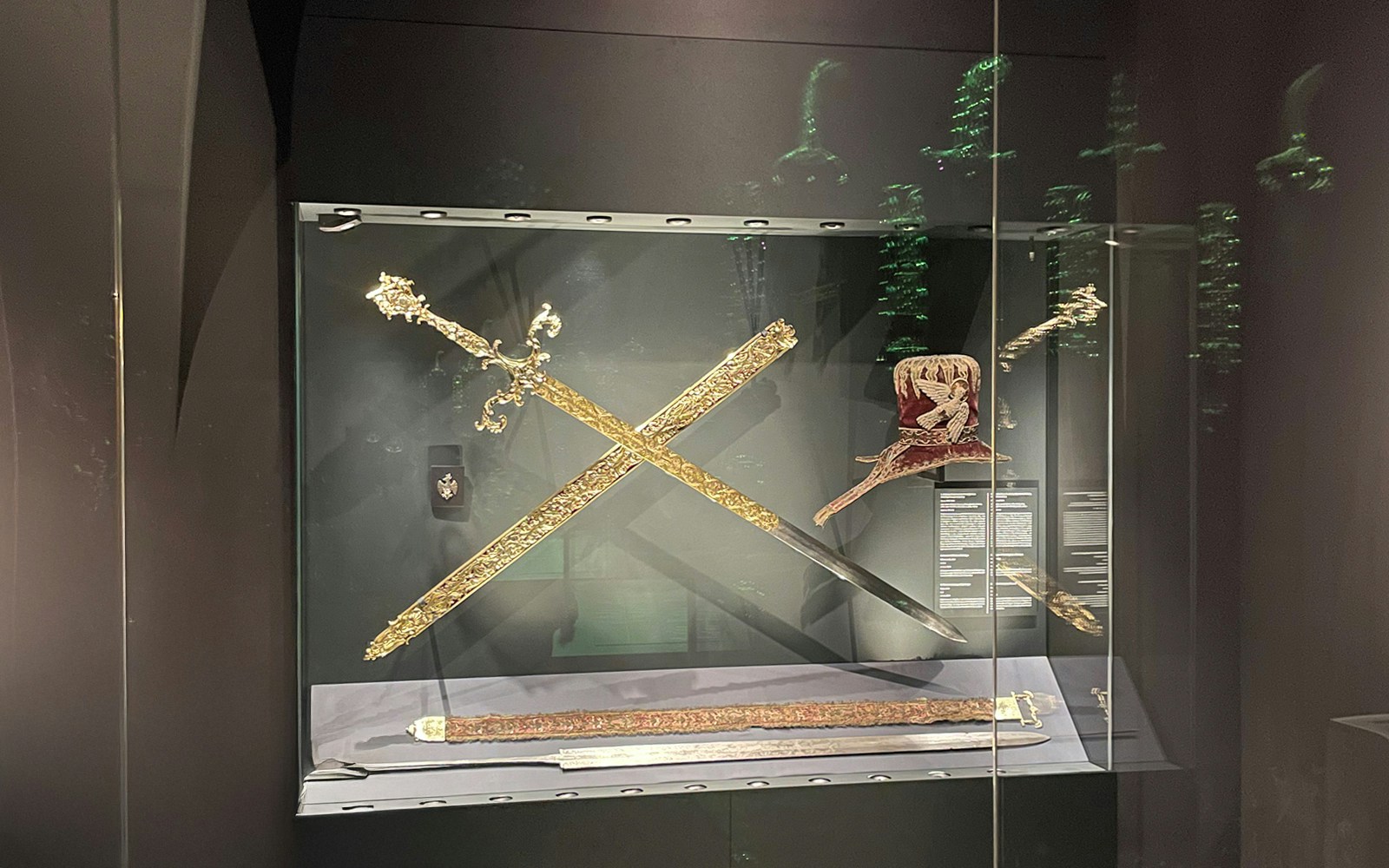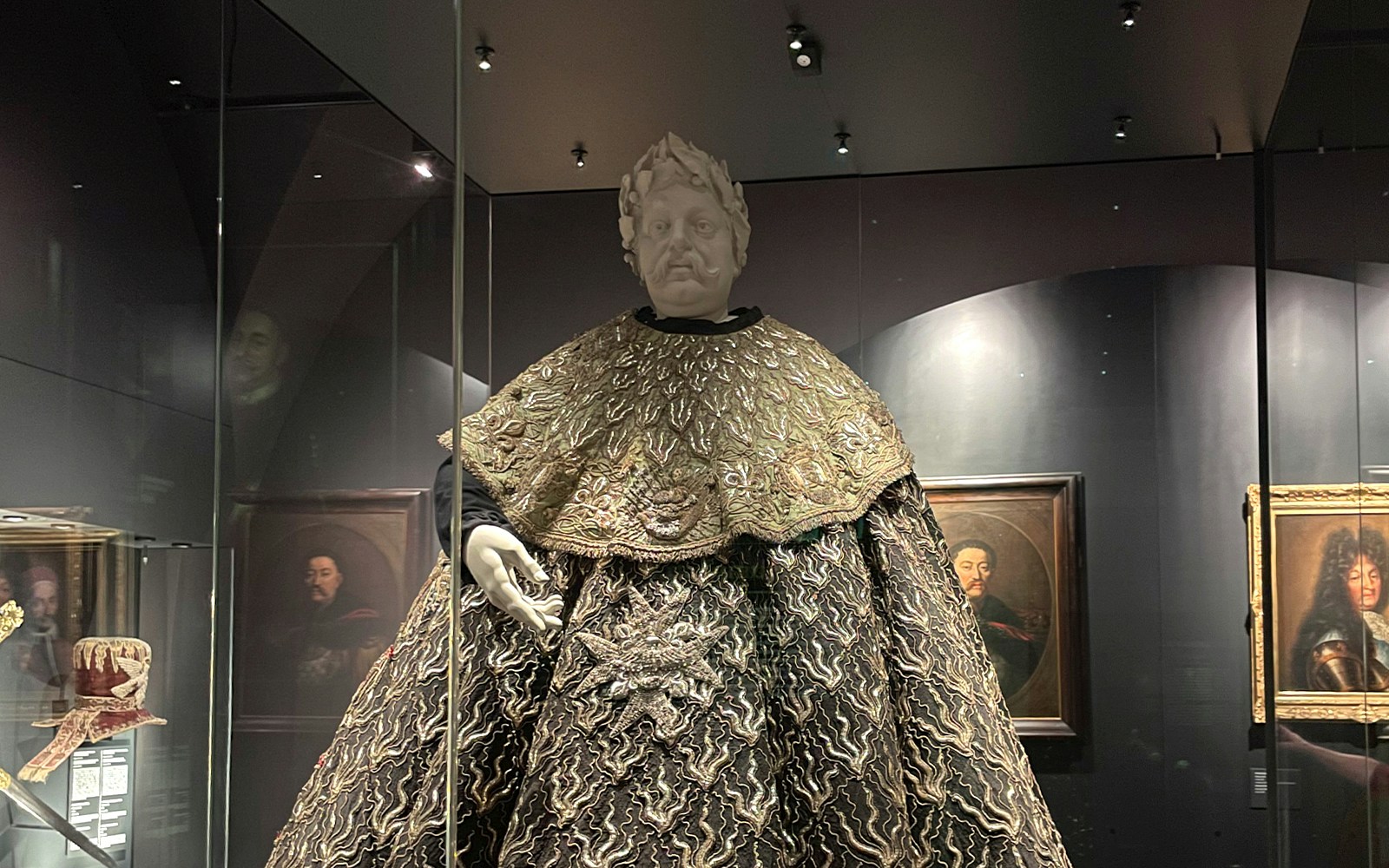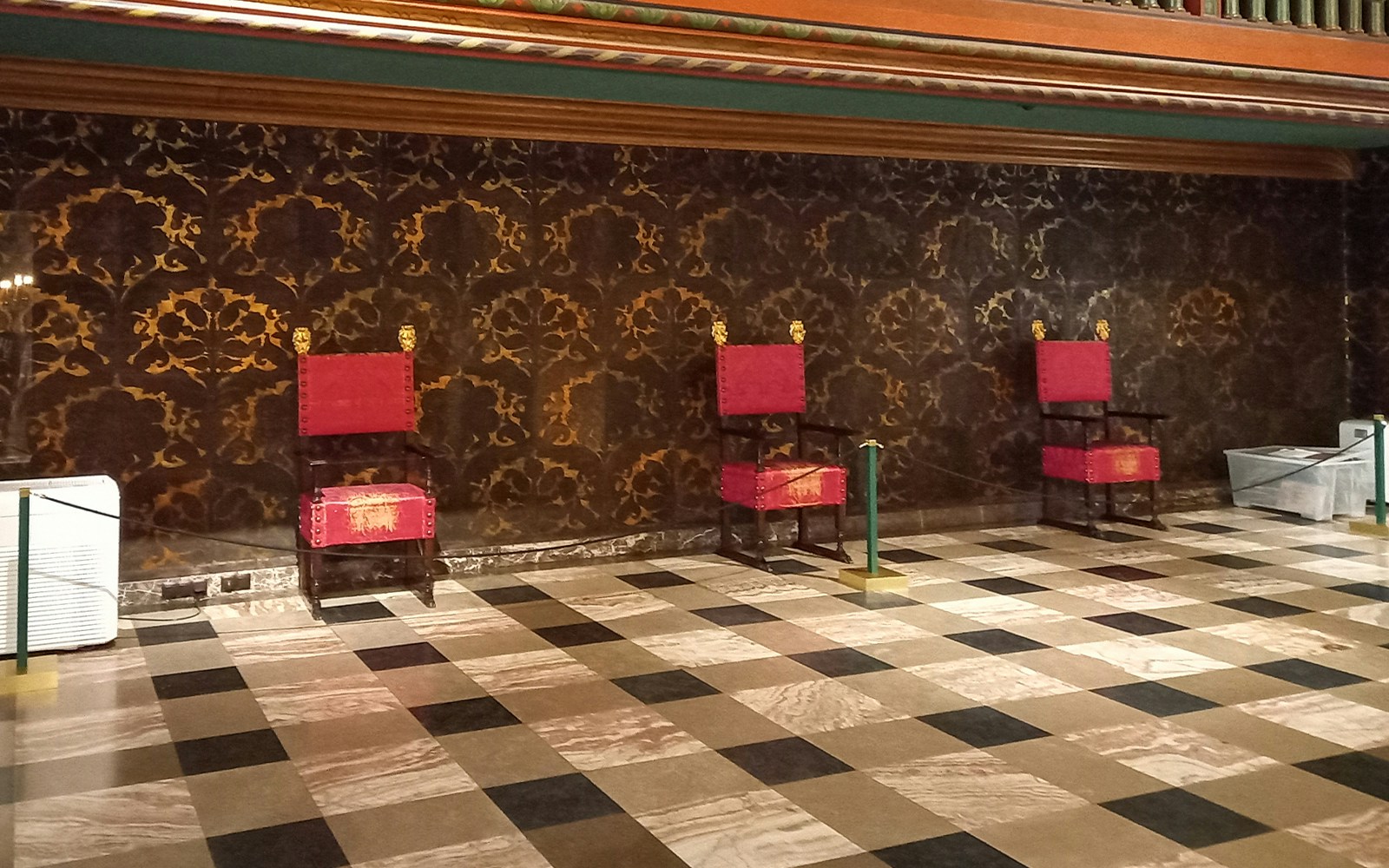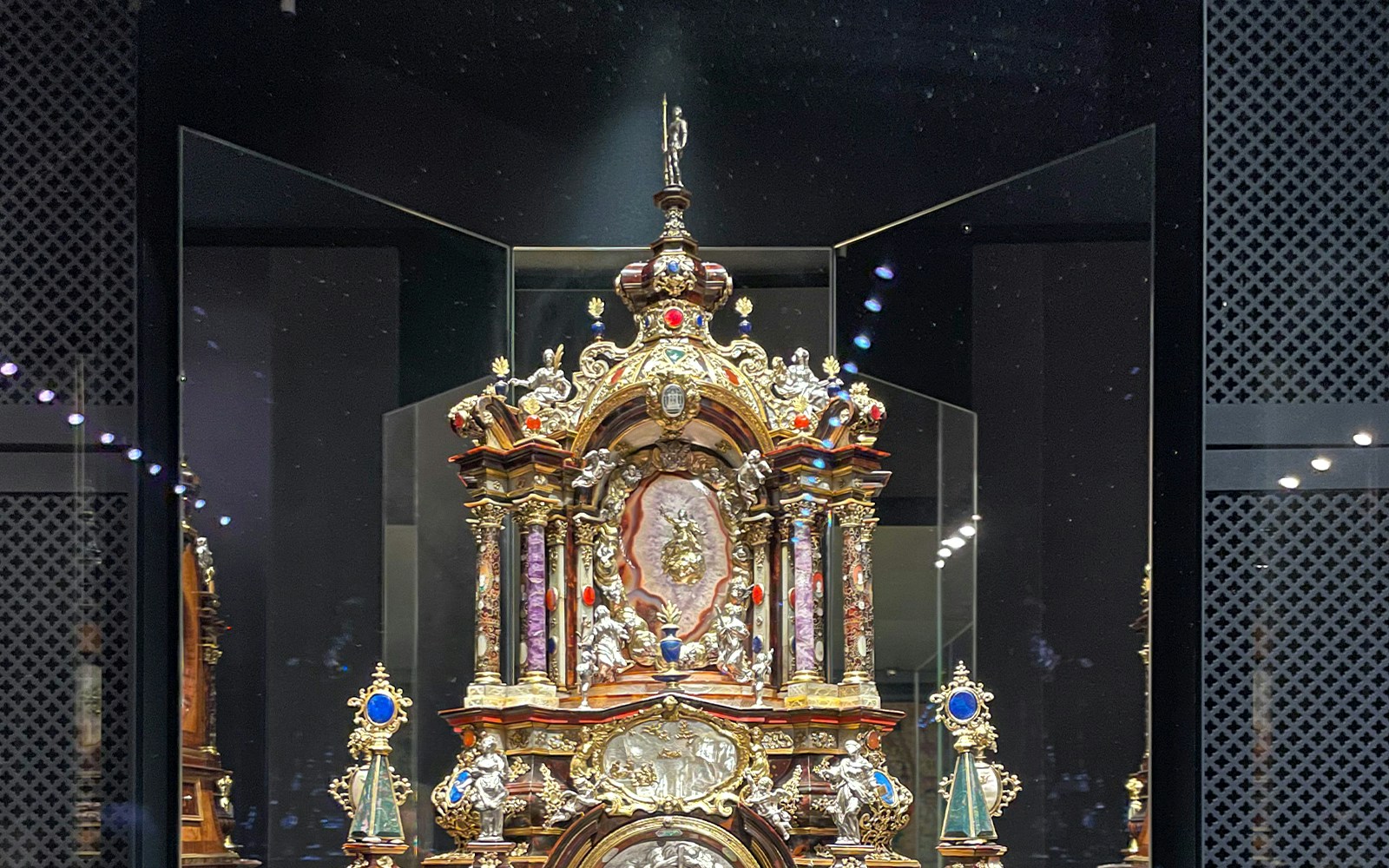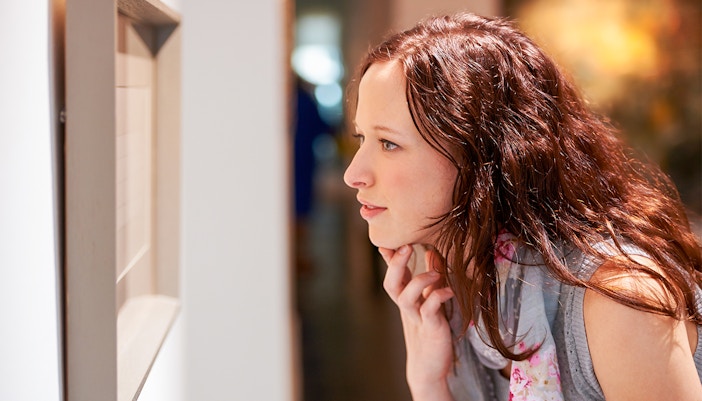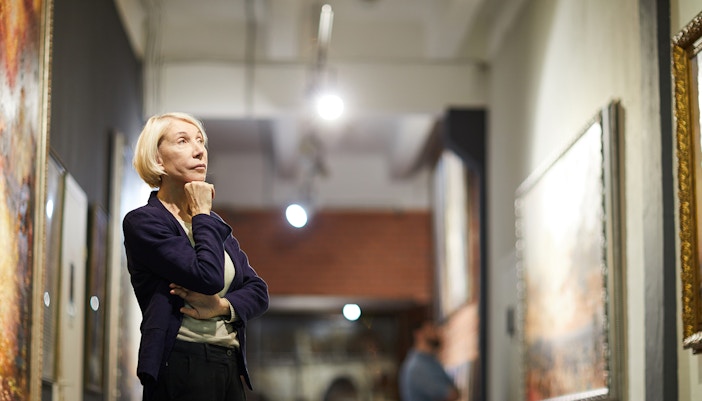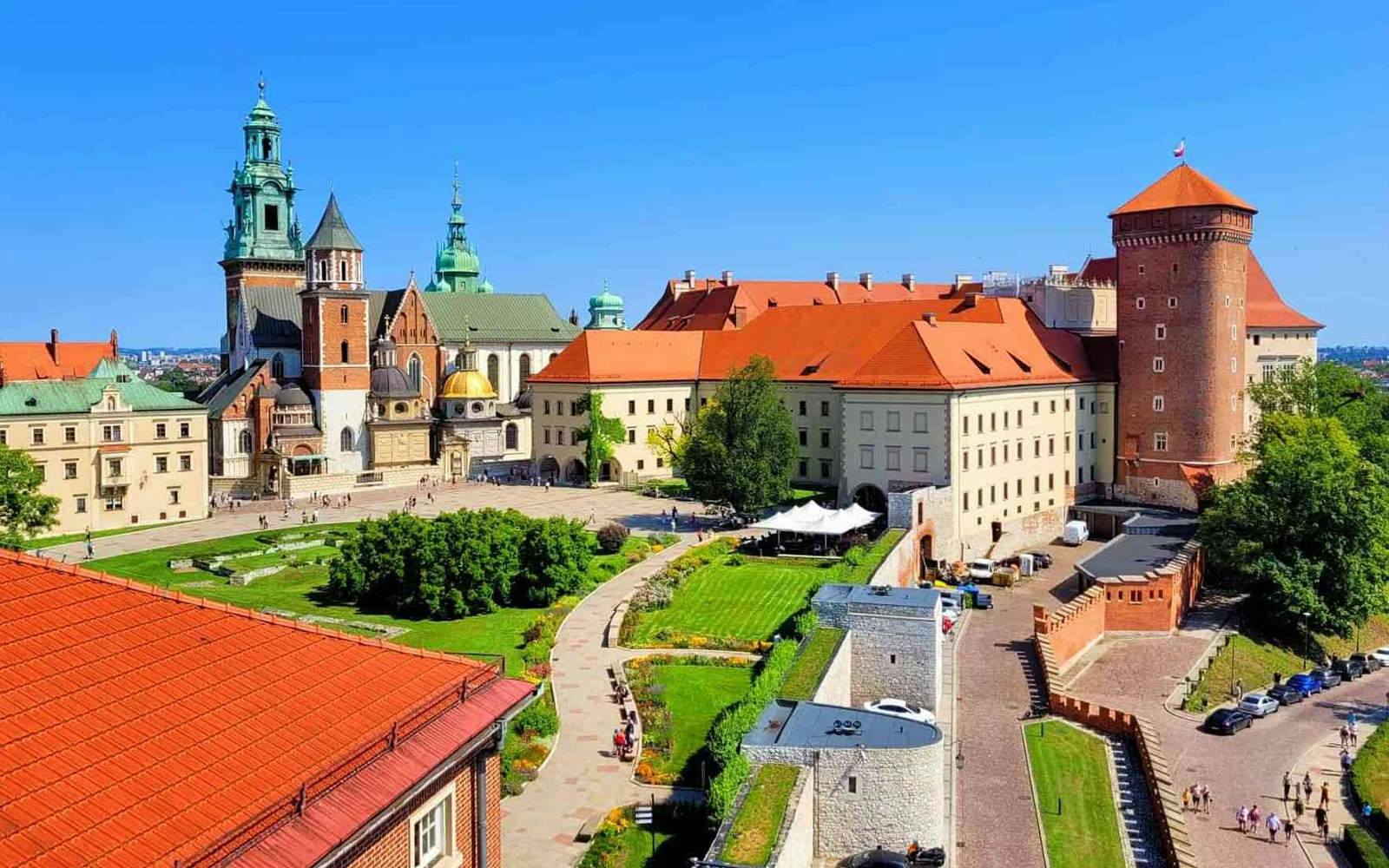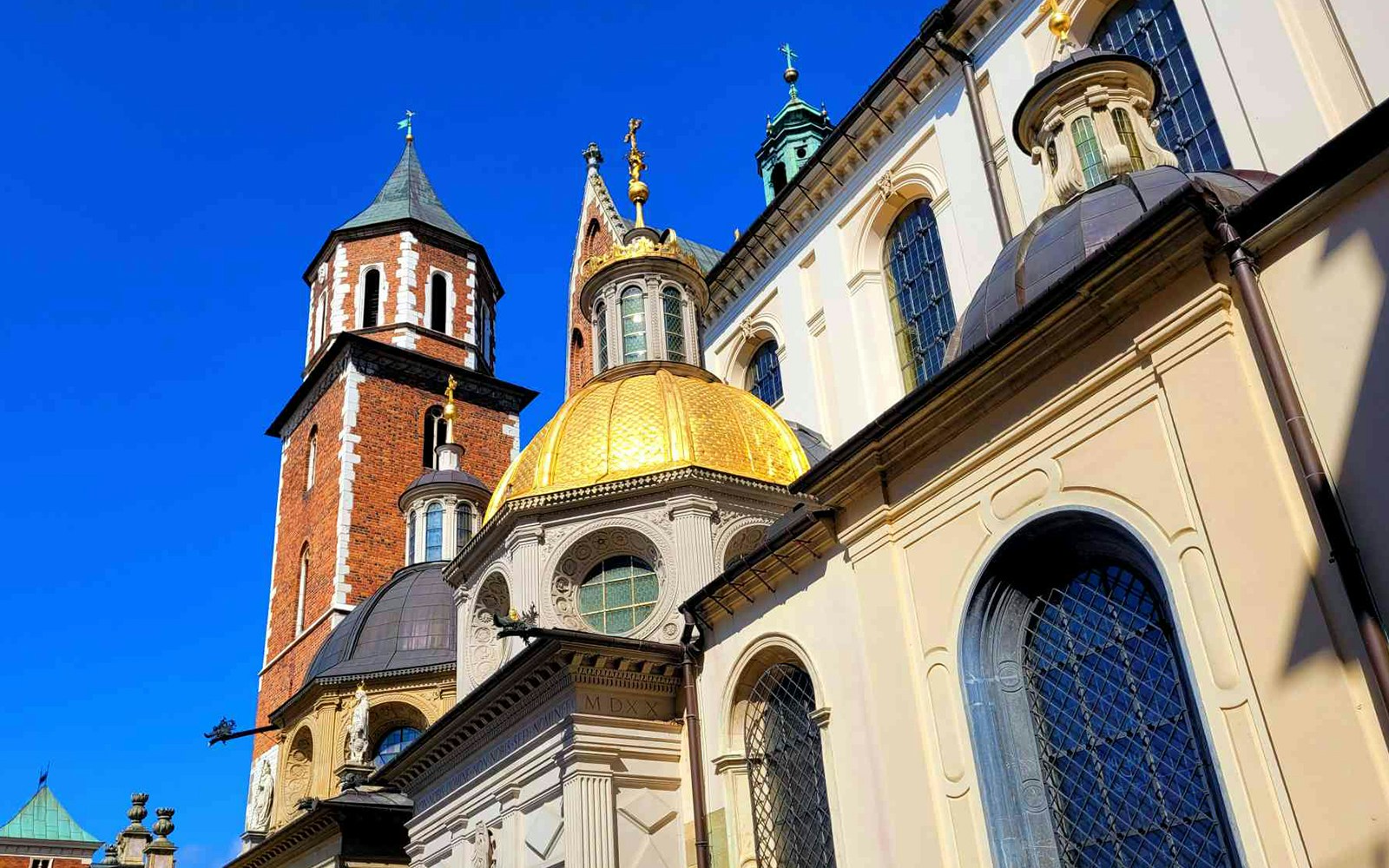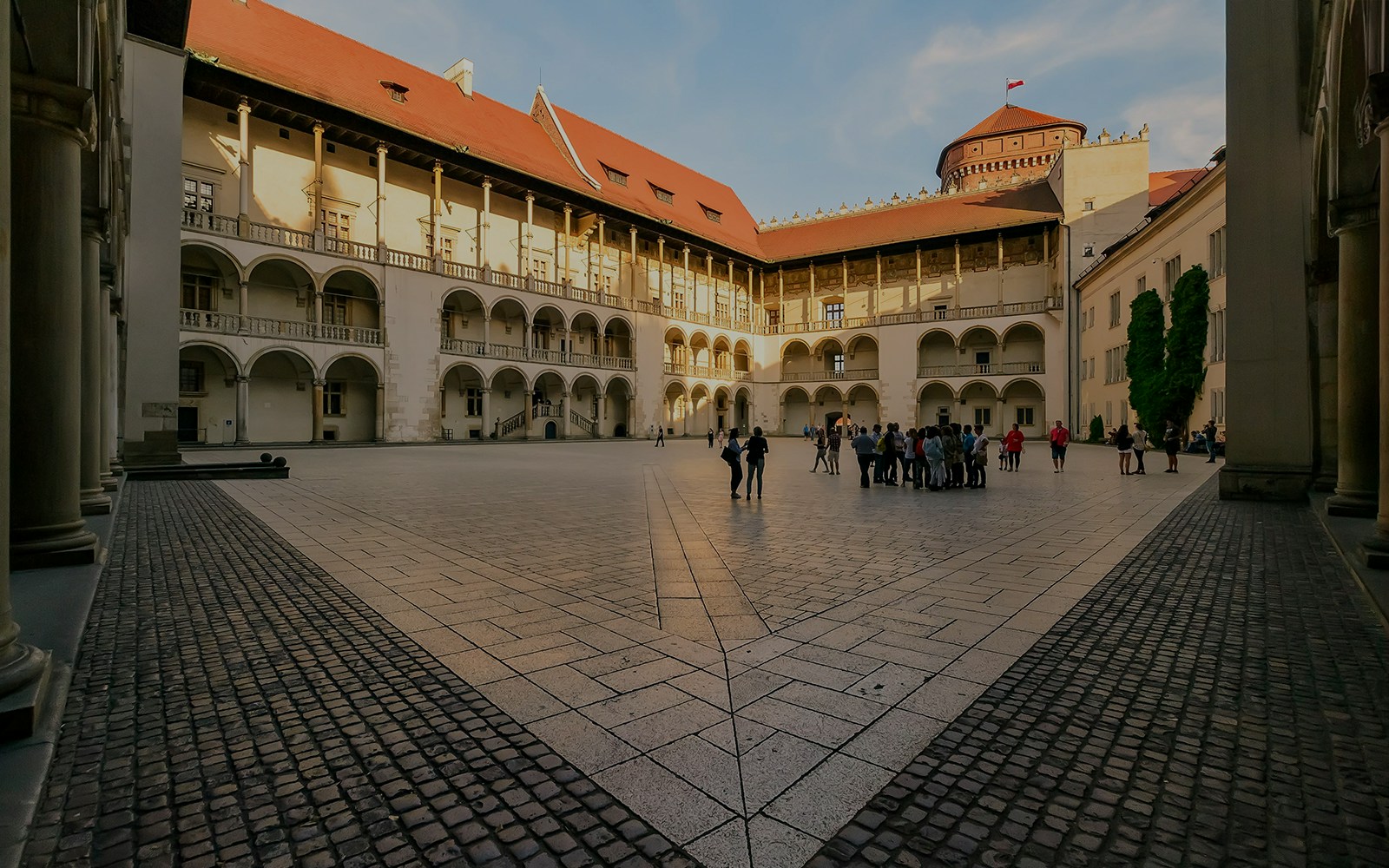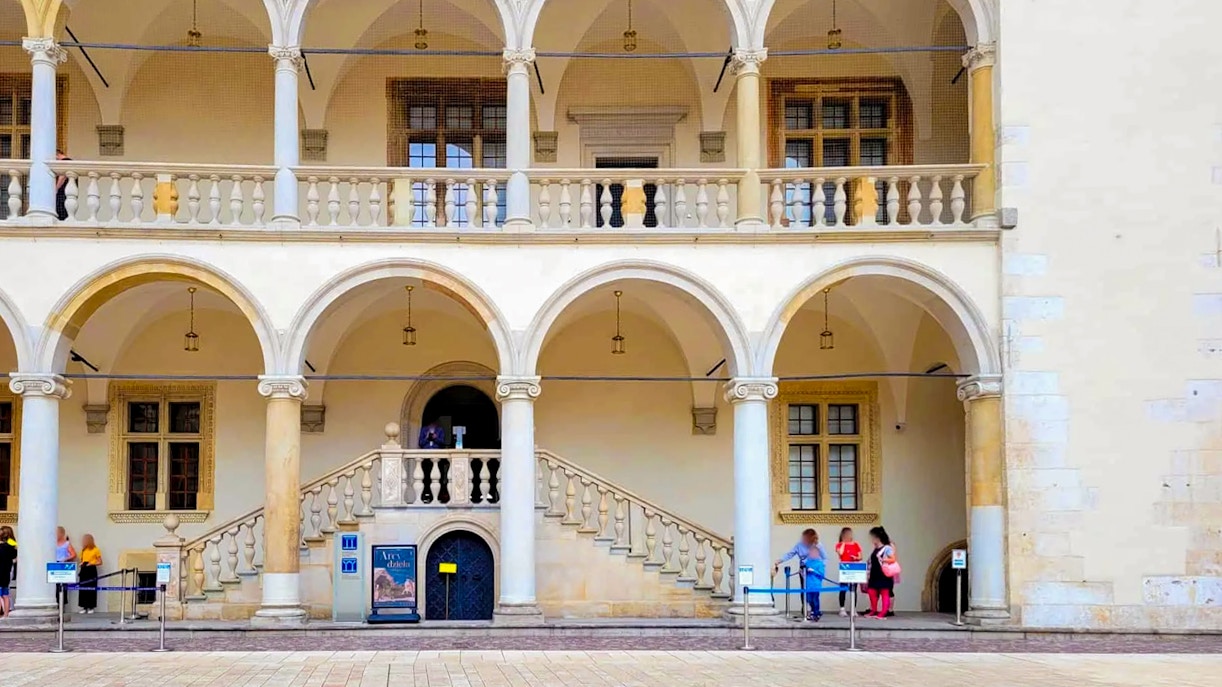For weapon connoisseurs and history lovers alike, the castle’s Crown Treasury and Royal Armoury is a treasure trove. It houses the famous Szczerbiec (Jagged Sword) from Polish coronations and medieval weaponry like crossbows, lances, firearms, and cannons. Additionally, royal insignia, jewelry, and the Crown of Bolesław I the Brave are on display, showcasing Poland’s regal heritage.
What to see at Wawel Castle, Krakow
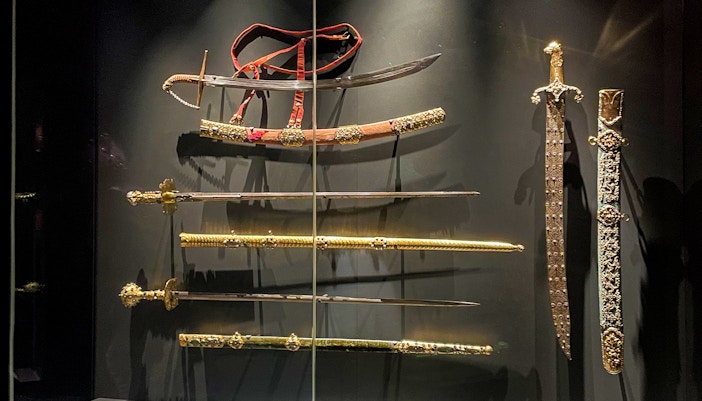
Crown Treasury and Armoury
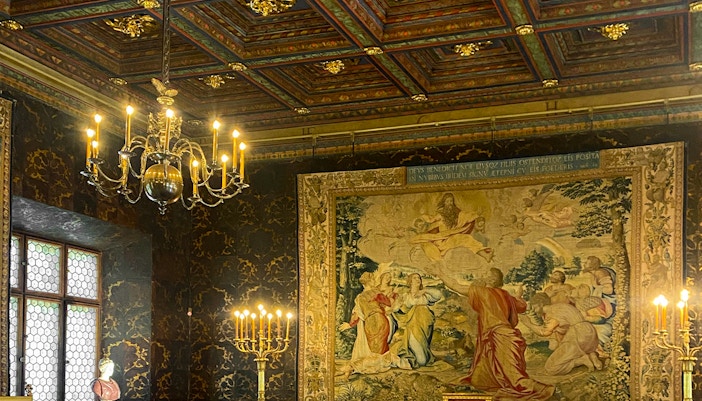
State Rooms
Explore the Renaissance-inspired State Rooms on the second floor. Within this section, The Hall of Senators, once a venue for senate sessions and performances, now displays 16th-century Flemish tapestries. The Hall of Deputies features an intimate setting, with wooden benches arranged for parliamentary discussions and replicas of key documents like the Polish-Lithuanian Commonwealth’s constitution.
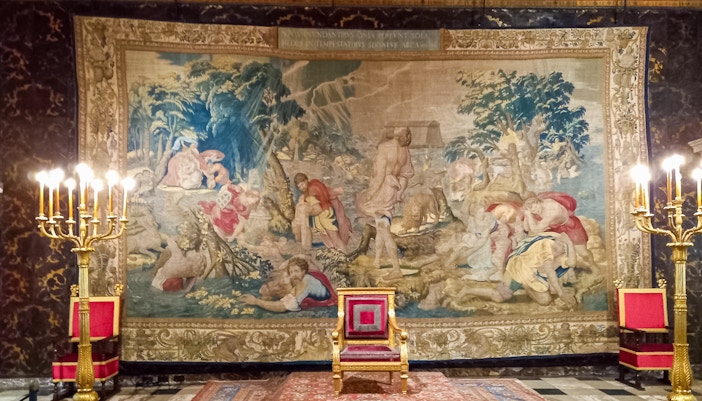
Royal private apartments
A tour of the royal private apartments will reveal stories that shaped the decisions and cultural legacy of Polish monarchs. Your guide will satisfy your curiosities with biblical, mythological, and allegorical representations of the Flemish tapestries collected by Zygmunt II Augustus. Don't miss the Hen’s Foot Tower, named for its three projecting buttresses, which is steeped in folklore and legends, adding an intriguing layer to your visit.
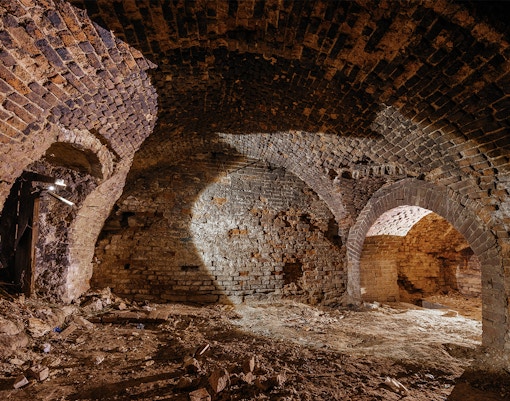
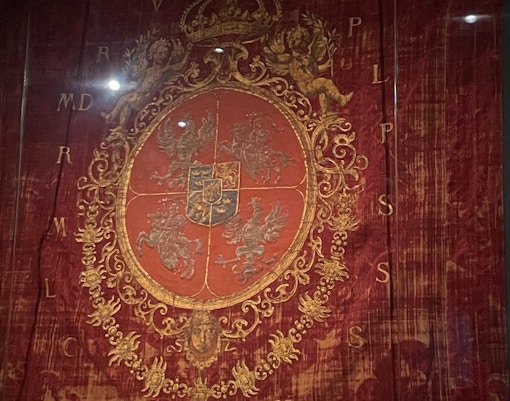
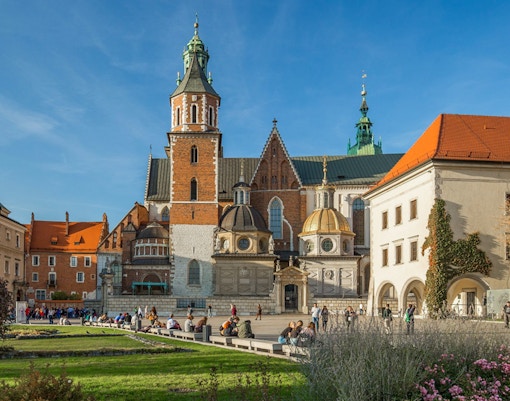
.jpg?auto=format&w=510.8727272727273&h=401.4&q=90&ar=14%3A11&crop=faces&fit=crop)
